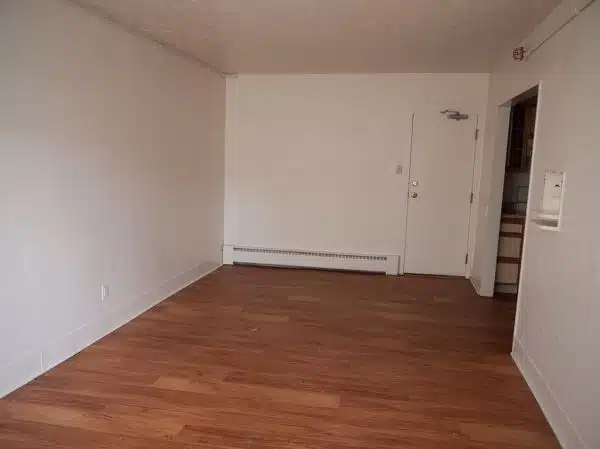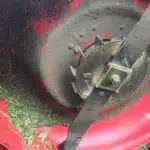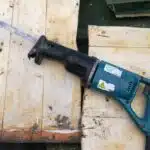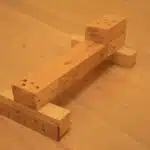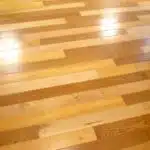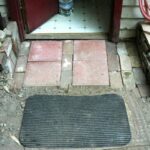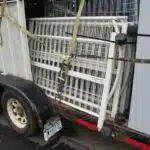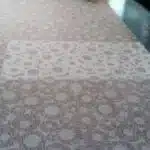As a flooring installation expert, I understand the importance of precision and accuracy when cutting vinyl flooring. Vinyl flooring is a popular choice for homeowners due to its durability, versatility, and affordability. However, improper cutting can result in unsightly seams and gaps that can compromise the aesthetic appeal of your home.
In this article, I will provide you with essential tips on how to cut vinyl flooring efficiently and accurately. Whether you are a DIY enthusiast or a professional installer, these techniques will help you achieve flawless results that will enhance the beauty and functionality of your space. By mastering these skills, you will also save time and money by avoiding costly mistakes that could result from using improper tools or techniques. Join me as we explore the world of vinyl flooring installations and learn how to cut it like a pro!
Choosing The Right Tools For The Job
To cut vinyl flooring, it is crucial to choose the right tools for the job. One of the most important tools you’ll need is a sharp blade. A dull blade can result in jagged and uneven cuts that can make installation difficult. It’s best to use a specialized vinyl flooring blade, which typically has a higher tooth count for smoother cutting.
Proper hand positioning is also essential when cutting vinyl flooring. To ensure safety and accuracy, your hands should be positioned firmly on either side of the material being cut. This will help guide the blade along the desired path while keeping your fingers out of harm’s way. Additionally, it’s important to keep your fingers away from the blade at all times to avoid injury.
When choosing the right tools for cutting vinyl flooring, remember to prioritize safety and precision above all else. By using a sharp blade and maintaining proper hand positioning, you’ll be able to make clean and accurate cuts that will make installation easier and more efficient. In the next section, we’ll cover how to measure and mark your vinyl flooring before making any cuts.
Measuring And Marking The Vinyl Flooring
- Accurate measurements of the space in which the vinyl flooring is being installed are essential for a successful installation.
- All measurements should be taken twice, and then verified with a third measurement, to ensure accuracy.
- Markings should be made on the vinyl to indicate where the cuts are to be made.
- Markings should be made with a pencil, and should be clearly visible.
- The vinyl should be cut with a sharp utility knife, using a straightedge to guide the blade.
- Care should be taken to ensure that the cuts are straight and even, and that the edges are not jagged.
Measuring The Space
To ensure a successful vinyl flooring installation, accurate measurements of the space are crucial. Measuring accuracy is key in preventing cutting errors that could lead to wasted materials and additional expenses. As a flooring installation expert, I recommend using a tape measure for precise measurements. Measure the length and width of the room, including any alcoves or protrusions, and write down the measurements on a notepad.
Next, it’s essential to account for any irregularities in the room’s shape or layout. Use a straightedge or level to check for any bumps or dips in the floor surface that may affect how the vinyl lays. Also, factor in any areas where you’ll need to make cuts around fixtures such as toilets or cabinets. Taking these factors into account will help ensure your final cuts match up accurately with your measured dimensions.
Lastly, it’s essential to double-check all measurements before making your cuts. Even small inaccuracies can lead to significant problems during installation. One helpful technique is to use masking tape to mark where each cut will be made before actually cutting into the vinyl material. This allows you to visualize your cuts and make adjustments as needed while still keeping your original measurements intact. With attention to detail and careful measuring techniques, you can avoid costly cutting errors and achieve professional-looking results with your vinyl flooring installation.
Marking The Vinyl
Accurate measurements are only half the battle when it comes to a successful vinyl flooring installation. After measuring the space, the next crucial step is marking the vinyl. Using a straightedge or level, mark where you will make your cuts on the vinyl material. It’s essential to avoid tearing or distorting the material during this process.
One helpful technique for marking the vinyl is to use masking tape. Apply the tape along your cut lines, being careful not to overlap onto any areas that will remain intact. This allows you to visualize your cuts and make adjustments as needed before actually cutting into the vinyl material.
After marking your cuts with masking tape, double-check all measurements before making any actual cuts. Take note of any fixtures such as cabinets or toilets that may require special cuts and ensure that they are accounted for in your markings. With proper marking techniques and attention to detail, you can avoid costly mistakes and achieve professional-looking results with your vinyl flooring installation.
Cutting The Vinyl
Measuring and marking the vinyl flooring is only the beginning of a successful installation. The next critical step is cutting the vinyl accurately. It’s essential to ensure that you have the right tools and techniques to achieve precision cuts that fit perfectly into your space. Cutting the vinyl may seem daunting, but with some tips for accuracy, you can avoid wastage and achieve professional-looking results.
One of the essential tips for precision cutting is to use sharp blades or knives. Dull blades can tear or deform the material, leaving unsightly edges that can ruin your entire flooring installation. Additionally, it’s crucial to use a straight edge or ruler when making cuts to ensure straight lines. Avoid using scissors as they can cause jagged edges that are difficult to join together.
Another tip for precision cutting is to cut slightly larger than needed and then trim down gradually until it fits perfectly into your space. This technique allows room for error while ensuring a tight fit without any gaps or overlaps. When cutting around fixtures such as cabinets or toilets, make sure to measure precisely and mark accordingly before making any cuts. Always double-check all measurements before cutting any vinyl material.
In conclusion, measuring and marking vinyl flooring is an essential step in achieving a successful installation. However, ensuring precise cuts during installation is equally crucial to avoid wastage and achieve professional-looking results. By following these tips for precision cutting and avoiding common mistakes, you can install beautiful vinyl flooring in your space with ease.
Selecting The Best Cutting Method For Your Needs
Cutting vinyl flooring is a crucial step in any installation process. It’s like cutting a tailor-made suit, if the cut isn’t precise, it won’t fit. The wrong cutting method can result in wasted material and additional expenses. To ensure that you make the right choice, it’s important to consider your specific needs and preferences.
Choosing the Right Blade is essential for any cutting task. A dull blade will not only make the job more difficult but may also damage the vinyl flooring. When selecting a blade, make sure that it is suitable for use with vinyl flooring. An ideal blade should be sharp enough to cut through the material cleanly without leaving any rough edges.
Safety Precautions are just as important as selecting the right blade. Before beginning any cutting task, ensure that you have protective gear such as gloves and goggles to protect yourself from injury. Additionally, take time to read through all safety instructions provided by manufacturers to avoid accidents while working with the equipment.
Transitioning into using a utility knife for straight cuts, it’s important to note that this method requires precision and patience. A utility knife offers greater control over cuts than other tools like scissors or shears and is perfect for making clean straight lines in areas where there are no curves or corners involved. With these tips in mind, you’ll be on your way to achieving professional-looking results when installing your vinyl flooring!
Using A Utility Knife For Straight Cuts
After selecting the best cutting method for your needs, it’s time to move on to the actual cutting process. One of the most common tools used for vinyl flooring cutting is a utility knife. This tool is perfect for straight cuts that require precision and accuracy.
Before you start making any cuts, it’s essential to ensure that your measurements are accurate. Once you have your measurements in place, use a straightedge to mark where you will be making your cut. After marking your cut line, take your utility knife and score along the line using firm pressure. It’s crucial to make multiple passes over the same area until you’ve penetrated through the vinyl flooring layer fully.
Using a utility knife and straightedge is an effective way to make precise, straight cuts when installing vinyl flooring. However, when dealing with curved edges or angles, this technique may not be sufficient. In this case, you need a jigsaw to create more intricate cuts on your vinyl flooring accurately. The next section will discuss how to create curved cuts with a jigsaw without compromising the integrity of your vinyl flooring.
Creating Curved Cuts With A Jigsaw
When creating curved cuts with a jigsaw, it is important to choose a blade that is designed for cutting vinyl flooring in order to achieve the best results.
Cutting vinyl flooring with a jigsaw requires a steady hand, patience, and the right speed settings on the saw.
To begin, mark the cut line on the vinyl flooring and secure the material to a work surface to avoid movement while cutting.
When making the cut, ensure that the blade is perpendicular to the surface and start the cut by applying gentle pressure and gradually increasing the speed as the blade passes through the material.
Choosing The Right Blade
To create curved cuts with a jigsaw, it’s essential to choose the right blade for the job. Blade maintenance is crucial in keeping your jigsaw operating at peak performance. A dull blade can cause rough cuts and make it difficult to control the tool. Therefore, always ensure that your blades are sharp and clean before starting any cutting operation.
When choosing a blade for cutting vinyl flooring, opt for a fine-toothed or bi-metal blade. These types of blades are designed to cut through soft materials without tearing them apart. The fine teeth also help create smooth edges, reducing the need for sanding or filing after cutting is complete. Additionally, using a bi-metal blade means that you’ll have fewer issues with blade wear and tear, as these blades are more durable than standard carbon steel blades.
Cutting efficiency is essential when working on large flooring projects. You don’t want to waste time and energy changing out blades every few cuts because they’re not up to the task at hand. Opting for high-quality blades will save you both time and money in the long run by reducing downtime and increasing productivity. With proper maintenance and careful selection of your jigsaw blades, you can achieve accurate curved cuts with ease while ensuring that your tools last longer than ever before!
Making The Cut
Creating curved cuts with a jigsaw requires a certain level of skill and precision. However, even experienced professionals can make common mistakes that can lead to subpar results. Therefore, it’s essential to take safety precautions when working with power tools. Always wear protective gear such as gloves and safety glasses to prevent injury.
When making the cut, start by marking your line with a pencil or chalk. This will help guide your jigsaw blade and ensure that you’re cutting in the right place. It’s also important to keep the jigsaw stable while cutting. Use clamps or other support tools to keep the material from moving around during the cutting process.
Finally, pay attention to your blade speed and pressure. Cutting too fast or applying too much pressure can cause the blade to overheat and wear out quickly. On the other hand, cutting too slowly can result in rough edges and an uneven cut. With these tips in mind, you’ll be able to create precise curved cuts every time with your jigsaw!
Achieving Precise Cuts With A Table Saw
As the saying goes, “measure twice and cut once.” This adage rings especially true when cutting vinyl flooring with a table saw. While a table saw can deliver precise cuts, it is crucial to prioritize safety measures to avoid injuries.
Before operating the table saw, ensure that all safety features are in place. This includes blade guards, anti-kickback pawls, and a riving knife. Additionally, wear appropriate personal protective equipment such as eye and ear protection. When ready to make the cut, be sure to use a push stick or push block to keep your hands away from the blade.
To achieve smooth edges on your vinyl flooring, use a sharp blade and adjust the height accordingly. It is also helpful to use a sacrificial fence or backing board to prevent tear-out on the underside of the flooring. Take your time with each cut and avoid rushing through the process. With patience and attention to detail, you can create precise cuts that will result in a flawless installation.
Transitioning into trimming vinyl flooring with a hand saw, it is important to note that while this method may take longer than using a table saw, it provides greater control over the cuts.
Trimming Vinyl Flooring With A Hand Saw
When it comes to trimming vinyl flooring, a hand saw is an excellent tool to use. However, before getting started, it’s essential to make sure that your hand saw is in good condition. Regular hand saw maintenance will help ensure that your cuts are clean and accurate, minimizing the risk of error. Additionally, you’ll want to choose the right blade for cutting thick vinyl. Look for a blade designed specifically for cutting plastic or PVC materials.
To begin trimming your vinyl flooring with a hand saw, mark the area you want to cut using a straight edge and pencil. Next, clamp down the vinyl flooring securely so that it doesn’t shift during cutting. Hold the saw firmly and begin making your cut slowly and steadily along the marked line. Do not try to force the saw through the material; let the blade do its job.
After completing your cut, remove any rough edges with a fine-grit sandpaper or file. This will smooth out any jagged areas left by the saw and give your edge a neat finish. Remember to wear safety goggles and gloves throughout this process to protect yourself from flying debris.
Transitioning into Cutting Vinyl Planks with a Miter Saw
While using a hand saw can be effective for trimming vinyl flooring, if you have large sections of vinyl planks that need cutting quickly and efficiently, using a miter saw may be more appropriate. In the next section, we’ll discuss how to use this power tool safely and correctly when working with vinyl planks.
Cutting Vinyl Planks With A Miter Saw
Cutting vinyl planks with a miter saw is an effective method for achieving precise and clean cuts. However, it requires proper maintenance of the tool to ensure that it functions optimally. Before using the miter saw, it is essential to inspect the blade for any signs of damage or dullness. A damaged blade can lead to uneven cuts and may require replacement. It is also important to keep the blade clean and lubricated to prevent clogging and overheating.
Miter saw blade selection is another crucial factor in cutting vinyl planks effectively. The type of blade used should be appropriate for cutting vinyl flooring, which is relatively softer than other materials such as hardwood or metal. A fine-toothed carbide-tipped saw blade with at least 80 teeth is ideal for cutting vinyl planks. This type of blade can produce smooth and clean cuts without damaging or chipping the material.
Proper maintenance and selection of the miter saw blade are key factors in successfully cutting vinyl planks. By taking these precautions, you can achieve precise and efficient cuts with minimal effort. In the next section, we will discuss tips for cutting around obstacles and corners when installing vinyl flooring using a miter saw.
Tips For Cutting Around Obstacles And Corners
As flooring installation experts, we understand that obstacles and corners can present a challenge when cutting vinyl flooring. If you are dealing with an irregularly shaped room or need to cut curved shapes, it is important to approach the task with care and precision. One tip for this is to use a template made from cardboard or paper to trace the shape onto the vinyl before cutting.
When encountering obstacles such as pipes or cabinets, it is important to measure carefully and make precise cuts. To ensure accuracy, you may want to consider making multiple small cuts rather than trying to cut all at once. Additionally, using a jigsaw or oscillating tool can give you more control when cutting around these challenging shapes.
Another important tip is to always leave extra material when making your initial cuts. This will allow for adjustments and fine-tuning as needed. Remember that it’s better to have too much material than not enough. By taking your time and being patient, you can achieve a professional-looking finish even when working around tricky obstacles and corners.
As you continue with your vinyl flooring project, it’s important to be aware of common cutting mistakes that can impact the final outcome. From uneven edges to inaccurate measurements, there are several pitfalls that can cause frustration and delay in your project. In the next section, we will explore some simple tips for avoiding these mistakes and achieving a flawless finish on your vinyl flooring installation.
Avoiding Common Cutting Mistakes
Now that you have learned some tips on cutting around obstacles and corners, it’s time to move on to avoiding common cutting mistakes. One of the most common errors when cutting vinyl flooring is using a dull blade. A dull blade can cause the material to fray or pull, resulting in an uneven cut. To avoid this issue, always use a sharp blade and replace it if necessary.
Another mistake people make when cutting vinyl flooring is rushing through the process. Precision is crucial when it comes to cutting vinyl flooring, so take your time and measure twice before making any cuts. Remember that it’s better to cut less than needed and trim more later than to cut too much at once.
To ensure precision while cutting vinyl flooring, consider using a straight edge or a T-square as a guide for your cuts. This will help you keep your lines straight and consistent throughout the project. Additionally, mark your cuts with a pencil beforehand to avoid any mistakes or confusion during the cutting process.
As important as precision is when cutting vinyl flooring, ensuring proper safety measures while doing so is just as crucial. In the next section, we will discuss some safety precautions you should take before and during the installation process to protect yourself from potential hazards.
Ensuring Proper Safety Measures While Cutting
When it comes to cutting vinyl flooring, safety should always be the top priority. This means taking the necessary precautions to avoid potential hazards that may arise during the process. One important safety measure is wearing appropriate protective gear such as safety goggles and gloves. This will help prevent any debris or sharp materials from coming into contact with your eyes or skin.
Another precaution to take is ensuring that your work area is clear of any obstacles or clutter that could cause you to trip or slip while handling cutting tools. Additionally, it’s important to use a sharp blade when cutting vinyl flooring. Dull blades can lead to accidents and make the process more difficult than it needs to be. Always keep in mind that you are working with sharp objects, so it’s crucial to handle them with care and attention.
Overall, proper safety precautions should be taken when cutting vinyl flooring in order to prevent any potential hazards or injuries. By taking these measures seriously, you can ensure a safe and successful installation process for both yourself and anyone else involved in the project. Next, we’ll discuss how properly maintaining your cutting tools can also contribute to a smooth and effective installation process.
Properly Maintaining Your Cutting Tools
Sharpening blades is essential to maintain performance of cutting tools as dull blades can cause damage to materials and create an unsatisfactory finish. Cleaning tools after each use is important in order to prevent the build-up of dirt and debris that can lead to premature wear and tear. Regular lubrication of blades is necessary to ensure smoothness during the cutting process and to extend the life of the tool. Regular sharpening and lubrication should be performed with the utmost care to prevent damage to the blade. Abrasive materials should never be used to sharpen blades as this can cause the blade to become dull prematurely. A variety of lubricants are available for use, but the best choice depends on the type of cutting tool and the material being cut.
Sharpening Blades
As a flooring installation expert, I understand the importance of properly maintaining cutting tools to ensure precise and efficient cuts in vinyl flooring. One crucial aspect of maintenance is sharpening blades regularly. Dull blades not only make the cutting process more difficult but can also damage the vinyl material, resulting in uneven edges or tears.
To maintain sharp blades, it is essential to use proper sharpening techniques. One effective method is using a sharpening stone or honing steel to restore the blade’s edge. Alternatively, electric sharpeners can also be used for quick and efficient results. It’s crucial to follow manufacturer instructions carefully when using electric sharpeners as improper use can damage the blade.
In addition to using proper sharpening techniques, regular maintenance tips such as cleaning blades after each use and storing them properly can prolong their lifespan. Blades should be wiped clean with a dry cloth and oiled lightly before storage to prevent rust buildup. By following these simple steps, you can ensure that your cutting tools are always ready for use and produce high-quality cuts in vinyl flooring installations.
Cleaning Tools
As a flooring installation expert, I understand the importance of properly maintaining cutting tools to ensure efficient and precise cuts in vinyl flooring. One important aspect of maintenance is cleaning tools after each use. Neglecting to clean blades can lead to rust buildup and damage the cutting edge, resulting in uneven cuts or tears.
To keep your cutting tools in top condition, it’s essential to follow proper cleaning techniques. One of the most common mistakes people make when cleaning blades is using harsh chemicals or abrasive materials that can cause damage. Instead, blades should be wiped clean with a dry cloth and oiled lightly before storage. For stubborn debris, a mild detergent solution can be used.
In addition to regular cleaning, storing tools properly is also crucial for their longevity. Blades should be stored in a dry place away from moisture or extreme temperatures, such as an enclosed toolbox or cabinet. By following these simple cleaning tips and storing your cutting tools correctly, you can ensure that they are always ready for use and produce high-quality cuts in vinyl flooring installations.
Lubricating Blades
As a flooring installation expert, I have learned that proper blade maintenance is essential to achieving high-quality cuts in vinyl flooring. One crucial aspect of blade maintenance is lubrication. Blades need to be lubricated to reduce friction and prevent rust buildup, which can lead to damage and poor cutting performance.
When it comes to choosing a lubricant for your cutting tools, there are various options available. Some of the most commonly used types of lubricants include silicone spray, machine oil, and WD-40. Silicone spray is an excellent choice for vinyl flooring installations because it dries quickly and doesn’t leave any residue. Machine oil is also effective but may require more frequent application. On the other hand, WD-40 should be avoided because it can attract dirt and debris.
To lubricate your blades properly, you should apply a small amount of lubricant directly onto the blade’s surface. Spread it evenly with a clean cloth or brush until the entire surface is covered. Afterward, wipe off any excess lubricant before storing the blade in a dry place away from moisture or extreme temperatures.
In summary, regular blade maintenance is crucial for achieving precise and efficient cuts in vinyl flooring installations. Lubricating your blades with the right type of lubricant can help reduce friction and prevent rust buildup, prolonging their lifespan. By following these simple steps for proper blade maintenance, you can ensure that your cutting tools are always ready for use when you need them most.
Understanding The Importance Of Cutting Speed And Pressure
Once you have properly maintained your cutting tools, it’s time to start cutting your vinyl flooring. The importance of blade sharpness cannot be overstated when it comes to vinyl flooring. A dull blade will result in jagged edges and uneven cuts, which can compromise the integrity of the installation.
It’s also crucial to adjust your cutting speed and pressure based on the type of vinyl flooring you are working with. For example, thicker and denser vinyl flooring may require more pressure and a slower cutting speed, while thinner and more flexible options may benefit from a faster speed and lighter pressure. Taking the time to adjust your settings for each individual type of flooring will ensure a clean cut every time.
By prioritizing blade sharpness and adjusting your cutting speed and pressure accordingly, you can avoid common mistakes that many DIYers make when installing vinyl flooring. However, if you do encounter issues during the cutting process, there are troubleshooting techniques available that can help resolve them. In the next section, we will discuss some of these common cutting problems and how to overcome them for a successful installation.
Troubleshooting Common Cutting Problems
To achieve clean and accurate cuts for your vinyl flooring installation, it is essential to troubleshoot common cutting problems that may arise. The following potential solutions can help you avoid tearing and fix ripped pieces.
Firstly, ensure that you are using the appropriate tools for cutting vinyl flooring. A sharp utility knife or a vinyl cutter with a replaceable blade is recommended. Avoid using dull blades as they may cause the material to tear or create jagged edges. Secondly, make sure to measure and mark the area of the vinyl flooring accurately before cutting. This can prevent uneven cuts or excess material that may cause tearing.
If you encounter a ripping issue while cutting vinyl flooring, there are ways to fix it instead of discarding the piece entirely. One method is to use a seam sealer adhesive to glue the ripped edges together. Another solution is to place masking tape around the area where the cut will be made before proceeding with cutting. This technique can help prevent tearing by providing extra support for the material during the cutting process.
By applying these potential solutions for cutting vinyl flooring without tearing and knowing how to fix ripped pieces, you can ensure that your installation remains intact without any unsightly damage. In the next section, we will discuss how to finalize your vinyl flooring installation with clean and accurate cuts, ensuring a polished look for your space.
Finalizing Your Vinyl Flooring Installation With Clean And Accurate Cuts
When it comes to finalizing your vinyl flooring installation, clean and accurate cuts are essential. Jagged edges can make the flooring look unprofessional and can also be a tripping hazard. To avoid jagged edges, it is important to use the right tools and techniques. One of the best tools for cutting vinyl flooring is a sharp utility knife or a vinyl cutter. Always make sure to use a straight edge as a guide when cutting, as this will help ensure accuracy.
Another tip for avoiding jagged edges is to take your time with each cut. Rushing can cause the blade to slip or veer off course, so it’s important to work slowly and steadily. If you do end up with any rough edges or uneven cuts, don’t panic. Most minor imperfections can be smoothed out with sandpaper or a file.
Once you’ve finished cutting your vinyl flooring, it’s important to properly dispose of any scraps or leftovers. Vinyl scraps should never be thrown in the regular trash because they cannot be recycled like other types of plastic. Instead, check with your local waste management facility to find out if they accept vinyl scraps for recycling. If not, you may need to take them to a specialized facility that handles hazardous waste disposal. By properly disposing of your vinyl scraps, you’ll be doing your part to protect the environment while also keeping your workspace clean and organized.
In summary, finalizing a vinyl flooring installation requires skillful cutting techniques that result in clean and accurate cuts without jagged edges. To achieve this goal, use sharp utility knives or vinyl cutters along with straight edges as guides. Take your time during each cut and don’t rush through the process as this may cause unwanted mistakes. Lastly, properly dispose of any leftover scraps by checking with local waste management facilities that accept such materials for recycling purposes or taking them directly to specialized facilities that handle hazardous waste disposal.
Conclusion
When it comes to installing vinyl flooring, cutting the material to fit your space is a crucial step. By following the right techniques and using the appropriate tools, you can achieve clean and accurate cuts for a polished finish. It is essential to choose the correct tool for your specific cutting needs, whether it be a utility knife or jigsaw.
Measuring and marking your vinyl flooring accurately before making any cuts is also important. Understanding the importance of cutting speed and pressure can help troubleshoot common cutting problems. And finally, maintaining your cutting tools properly will ensure they remain sharp and effective. Remember, practice makes perfect. With patience and precision, you can cut your vinyl flooring with ease and achieve professional-looking results for years to come. As the saying goes, “measure twice, cut once.”
Image Credits
- “Faux Wood Vinyl Plank Flooring” by Zane Selvans (featured)

